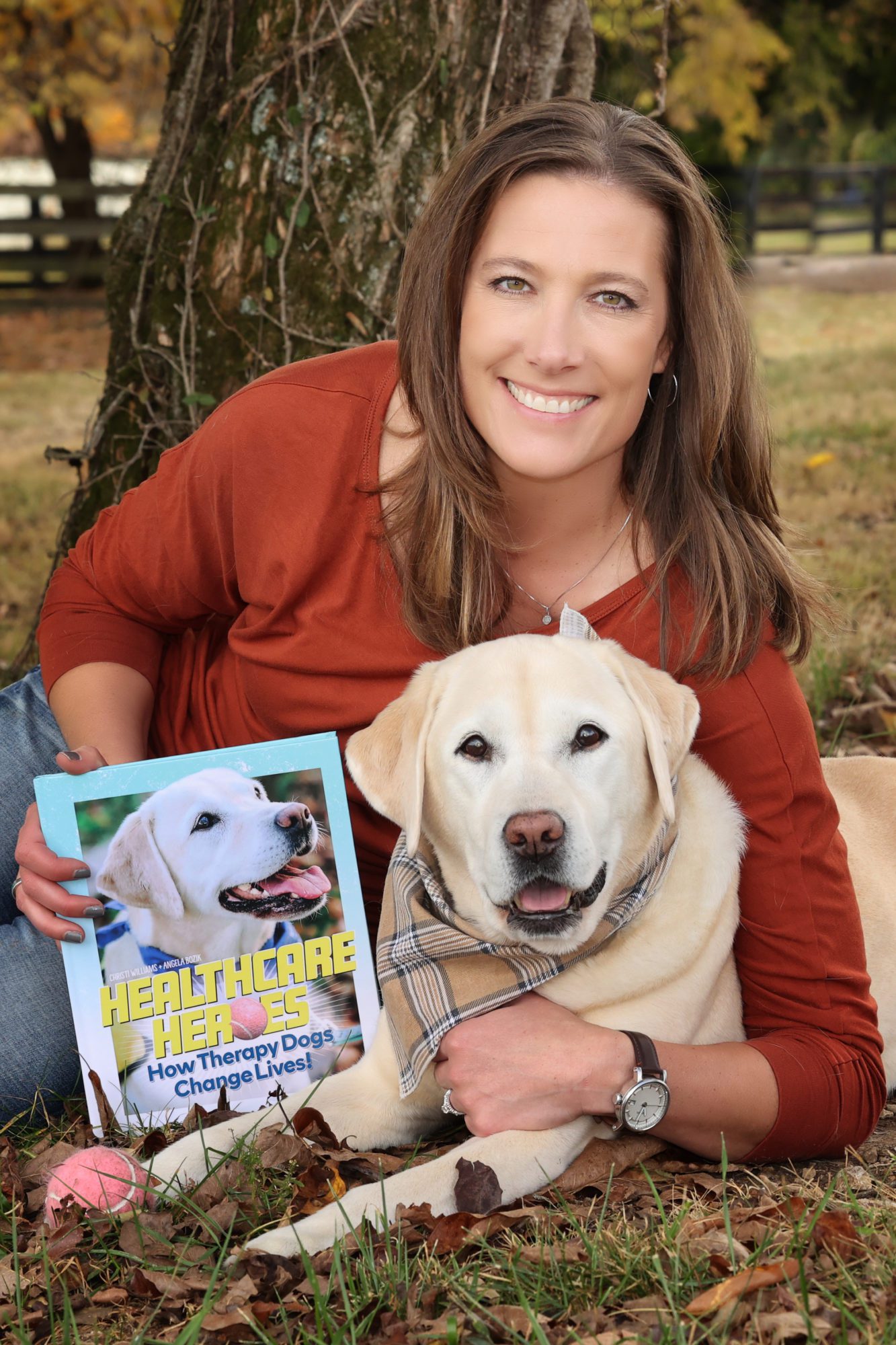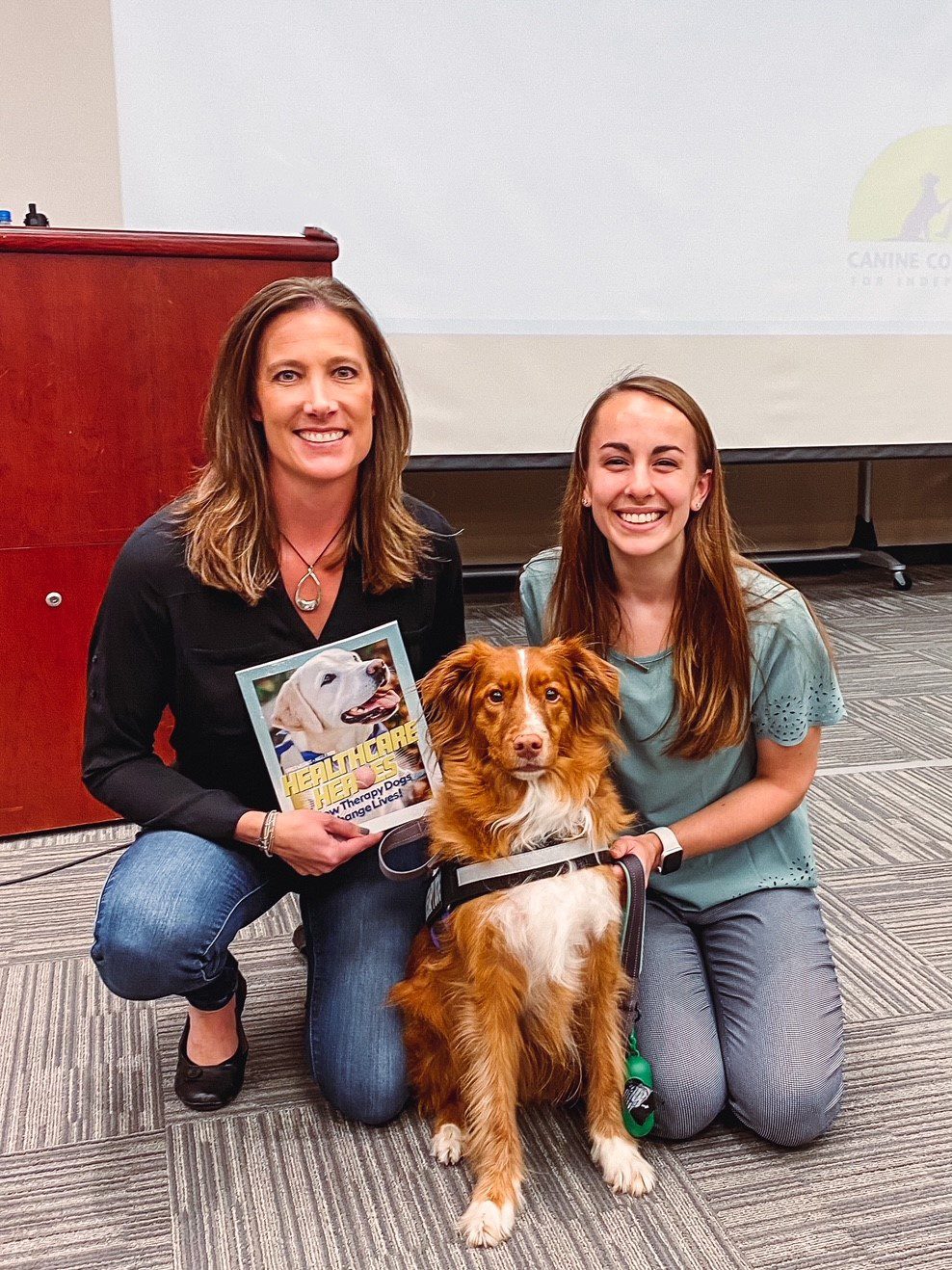
Dr. Christi Williams, physical therapy associate professor and 2005 Belmont alumna, recently self-published the book Healthcare Heroes: How Therapy Dogs Change Lives! along with co-author Dr. Angela Bozik (‘22). The book highlights the impact therapy dogs have on the health care industry with both patients and providers.
Written at a middle school reading level for accessibility, this book is for everyone. Young children enjoy the book’s full-size photos, and adults have learned about the importance of therapy dogs within a variety of health care settings. The book’s goal is twofold: to educate and inspire. “I want people to read this and think, ‘My dog could do that!’ and encourage people to go through the training to get their dog registered to be a therapy dog,” said Williams.
Bozik, a 2022 occupational therapy alumna, worked alongside Williams as a co-author on the project as part of her occupational therapy senior capstone project. Her dog Maisy—featured in the book—is a newly certified therapy dog.
Service Dogs vs. Therapy Dogs
What is the difference between service dogs and therapy dogs? Service dogs are specifically trained for one person to fill in gaps for someone with a disability (i.e., mobility, seizure alert, etc.). Therapy dogs are pets trained, tested and certified to work with various people. Once certified, the dog and owner can visit numerous facilities and settings.
Williams has always had a passion for dogs. In fact, during her Belmont Physical Therapy interview as a prospective student, she was asked what first made her interested in the field. “I remember saying that I saw a special on TV of kids with cancer working with a dog, which was what first made me look into what physical therapy was,” she recalled. “Fast forward, I never did anything pediatrics or cancer or dogs –completely outpatient orthopedic physical therapy, so it never crossed my mind again.”
After transitioning from full-time practice to full-time teaching, Williams knew she eventually wanted to train a service dog, but realistically thought it would not happen until she retired. She could, however, train her own dog Layla, a sweet, Labrador retriever to be a therapy dog. She received special permission to bring Layla to campus as the two trained for Layla’s therapy dog certification. “Belmont labs are set up just like health care facilities, so it was the perfect layout to practice. Layla was introduced to many diverse people and was exposed to physical therapy and occupational therapy settings.”
The two began volunteering at pediatric oncology centers and neuro ICUs working with both patients and providers. “The impact I saw so quickly made me step back as a PT. All this time, I’ve been working to help people as a physical therapist,” she said. “Then I realized that me being an everyday person, walking in with a dog, how much change that created immediately.”
The decrease in pain levels and stress among patients was profound, as Williams described, and prompted her to conduct research at Belmont on therapy dogs, specifically on using dogs for anxiety reduction before exams.

Within Physical Therapy Curriculum
Therapy dogs are not new, but little is known about access and laws within health care settings. In fact, they are extremely underutilized within health care simply due to a lack of knowledge and training. Williams has integrated service and therapy dogs within physical therapy curriculum at Belmont in the “Psychosocial Aspects of Health” course to educate future providers to use them in practice. “The majority of health care providers simply don’t know what service and therapy dogs are, or what they can do,” said Williams.
A unique offering, Belmont is one of the only physical therapy programs that integrate therapy and service dogs within curriculum. Through this course content, Williams hopes to prepare future physical therapists on how to use dogs in practice, and the impact therapy dogs can have on both patients and providers.
Looking Ahead
Williams is hoping to share her book broadly, especially in waiting rooms, hospitals, outpatient rehab centers, dental clinics and more. Through her visits with Layla to local facilities, she’s seen an impact far beyond the patient. “Long term, this can be huge for the health care world,” said the physical therapist. “I have seen the effect a dog has on providers, which was not my goal when I first started this. It has such a massive impact on nurses and others on the care team.”
All proceeds from the book are being donated back to therapy dog organizations. “This work is holistic, and doesn’t stop here,” said Williams. She will be on sabbatical from teaching in spring 2023 and is researching, interviewing and gathering content for a second book.
You can purchase Healthcare Heroes! How Therapy Dogs Change Lives on Amazon or at Barnes and Noble.


